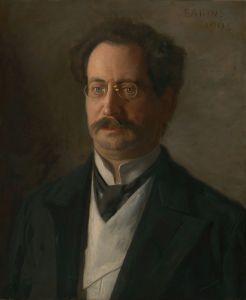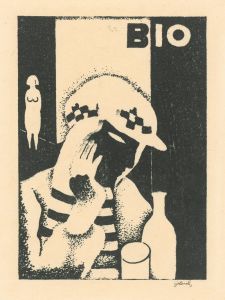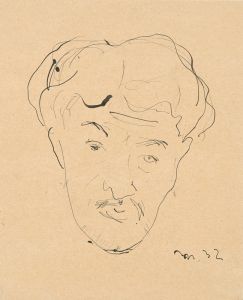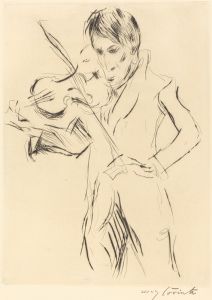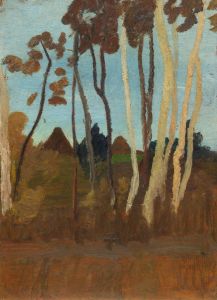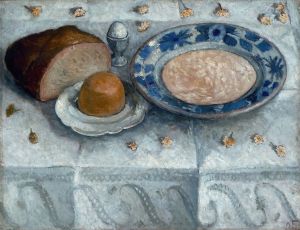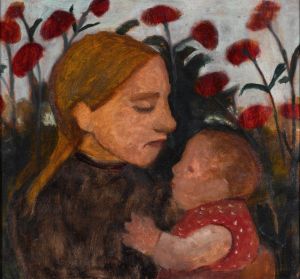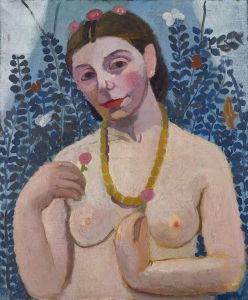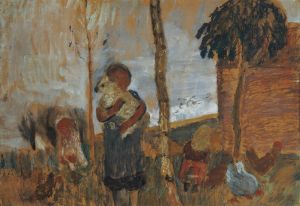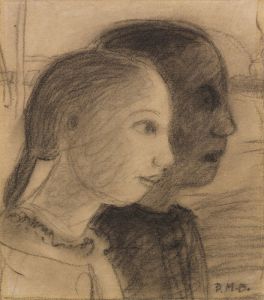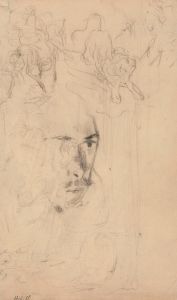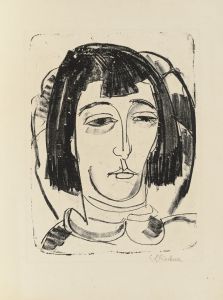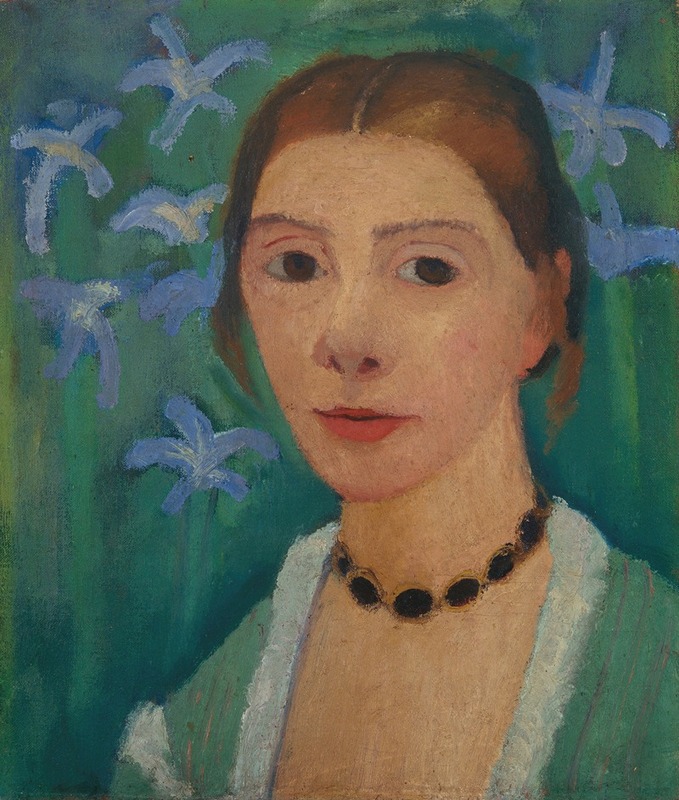
Self-portrait in front of a green background with a blue iris
A hand-painted replica of Paula Modersohn-Becker’s masterpiece Self-portrait in front of a green background with a blue iris, meticulously crafted by professional artists to capture the true essence of the original. Each piece is created with museum-quality canvas and rare mineral pigments, carefully painted by experienced artists with delicate brushstrokes and rich, layered colors to perfectly recreate the texture of the original artwork. Unlike machine-printed reproductions, this hand-painted version brings the painting to life, infused with the artist’s emotions and skill in every stroke. Whether for personal collection or home decoration, it instantly elevates the artistic atmosphere of any space.
Paula Modersohn-Becker was a pioneering German painter and one of the most important figures in early expressionism. Her work is noted for its bold use of color and form, and she is recognized as one of the first female artists to paint nude self-portraits. Among her notable works is "Self-portrait in front of a green background with a blue iris," which exemplifies her innovative approach to self-portraiture and her exploration of identity and femininity.
This painting, created in 1907, is a striking example of Modersohn-Becker's mature style. It features the artist herself, depicted with a direct and introspective gaze, set against a vibrant green background. The choice of a green backdrop is significant, as it contrasts with the warm tones of her skin and the blue iris she holds, creating a vivid and harmonious composition. The iris, a symbol often associated with femininity and creativity, adds a layer of symbolic meaning to the work, suggesting themes of growth and self-discovery.
Modersohn-Becker's approach to self-portraiture was groundbreaking for her time. She often depicted herself in a manner that challenged traditional representations of women in art. In this painting, her expression is calm and contemplative, conveying a sense of self-awareness and confidence. The simplicity of her attire and the absence of elaborate accessories draw attention to her face and the flower, emphasizing her focus on inner life and personal identity.
The painting reflects Modersohn-Becker's exposure to various artistic influences during her time in Paris, where she was influenced by the works of Paul Cézanne, Vincent van Gogh, and the Fauves. These influences are evident in her use of bold colors and simplified forms, which became hallmarks of her style. Her work also shows an affinity with the German expressionist movement, which sought to convey emotional experience rather than physical reality.
Tragically, Modersohn-Becker's career was cut short when she died at the age of 31, shortly after giving birth to her daughter. Despite her brief career, she left behind a significant body of work that has continued to influence artists and art historians. Her self-portraits, in particular, are celebrated for their introspective quality and their challenge to traditional gender roles in art.
"Self-portrait in front of a green background with a blue iris" is housed in the Paula Modersohn-Becker Museum in Bremen, Germany, which was the first museum in the world dedicated to a female artist. The museum's collection provides insight into her development as an artist and her contributions to modern art. Modersohn-Becker's legacy is marked by her courage to defy conventions and her commitment to exploring the complexities of identity and self-representation through her art.





